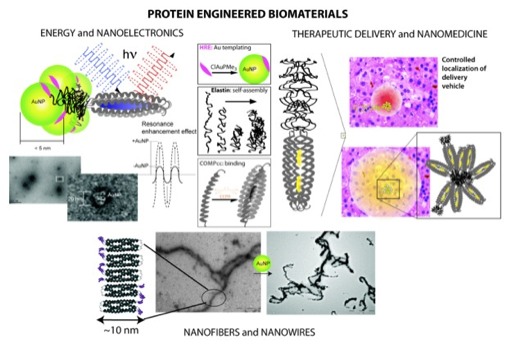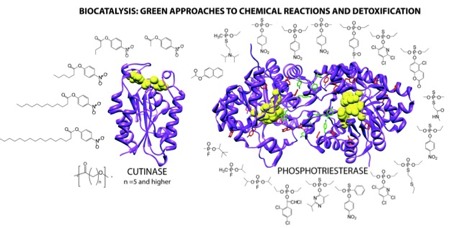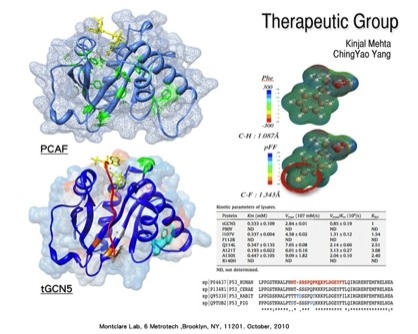[separator top=”5″ style=”shadow”]
[one_third last=”no”]
[title size=”2″]Biomaterials Research[/title]
Numerous applications like tissue engineering, drug-delivery, imaging, energy and others require novel biomaterials to serve specific purposes. Our lab work is focused on designing protein-derived building blocks that are tailored to serve the above mentioned applications. We achieve this by exploiting the self-assembly of coiled-coil proteins and elastin like polypeptides to generate novel higher order assemblies via bottom-up approach.
[/one_third]
[two_third last=”yes”]
[/two_third]
[separator top=”5″ style=”shadow”]
[one_third last=”no”]
[title size=”2″]Biocatalytic Research[/title]
Using natural catalysts, such as enzymes, to mediate chemical transformations on organic compounds has proved to be a useful technology. In particular, we have focused on two classes of enzymes i) cutinases and ii) phosphotriesterase. The cutinase enzymes are employed for several polymer chemistry reactions including: polymer degradation, modification and synthesis. Phosphotriesterases are enzymes found in soil bacterium which efficiently degrade organophosphates–synthetic small molecule acetylcholinesterase inhibitors. Our goal is to exploit a variety of different protein engineering techniques to enhance the stability and reactivity of these enzymes.
[/one_third]
[two_third last=”yes”]
[/two_third]
[separator top=”5″ style=”shadow”]
[one_third last=”no”]
[title size=”2″]Therapeutic Research[/title]
Peptides and proteins have recently come to the forefront as viable therapeutics with >130 different protein therapies approved for clinical use in the United States. Towards the development of protein therapies, we are re-engineering histone acetyltransferases (HATs) through rational and combinatorial mutagenesis in combination with non-natural amino acid incorporation. By combing genetic and chemical diversity, we are focused on altering HAT substrate specificity and improve both stability and function. Both tGCN5 and PCAF are the specific HAT proteins we study. The goal of the project is to ultimately synthesize a variant of HAT that is ideal for therapeutic use through acetylation and activation of tumor supressor p53.
[/one_third]
[two_third last=”yes”]
[/two_third]


